— August 26, 2019

Digital Marketing is a science. And just as there are multiple types of science, there are various forms of digital marketing. But the average person doesn’t necessarily know what is what on a given search results page, nor what drives each of those results.
Although digital marketing is constantly changing, we wanted to provide a “back to basics” overview to break down what today’s search results pages often look like, what each listing means, and what triggers the results the user sees. As with anything, there are variations and exceptions due to browser, device, settings, etc., but we don’t want to take up your entire day, so for this post, we’ll stick to the basics.
Picture science as a big umbrella with biology, physics, chemistry, earth science, and space science under it.
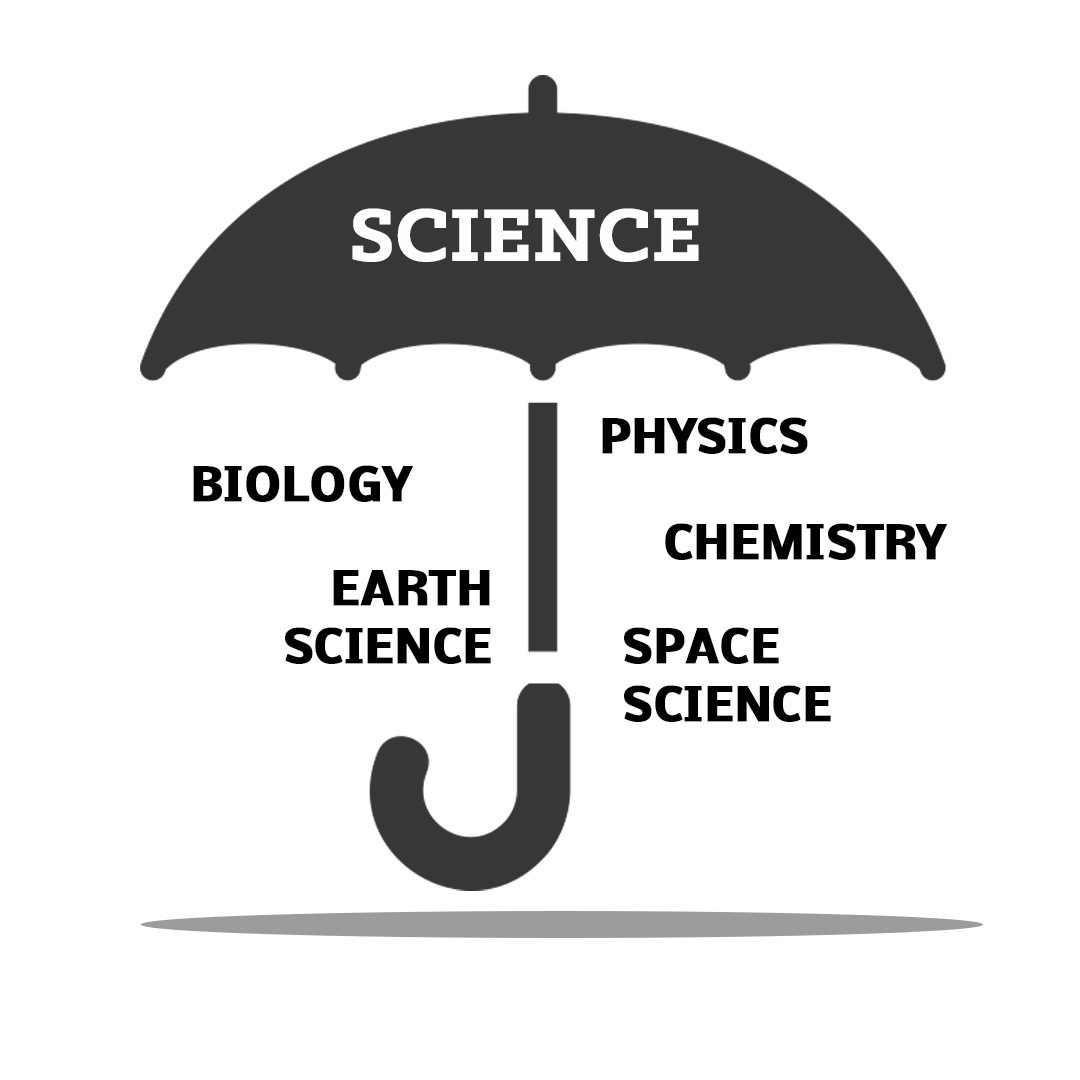
Now, picture digital marketing as a big umbrella with pay-per-click (PPC), comparison shopping engines (CSE), search engine optimization (SEO), social media marketing, affiliate marketing, and email marketing under it.
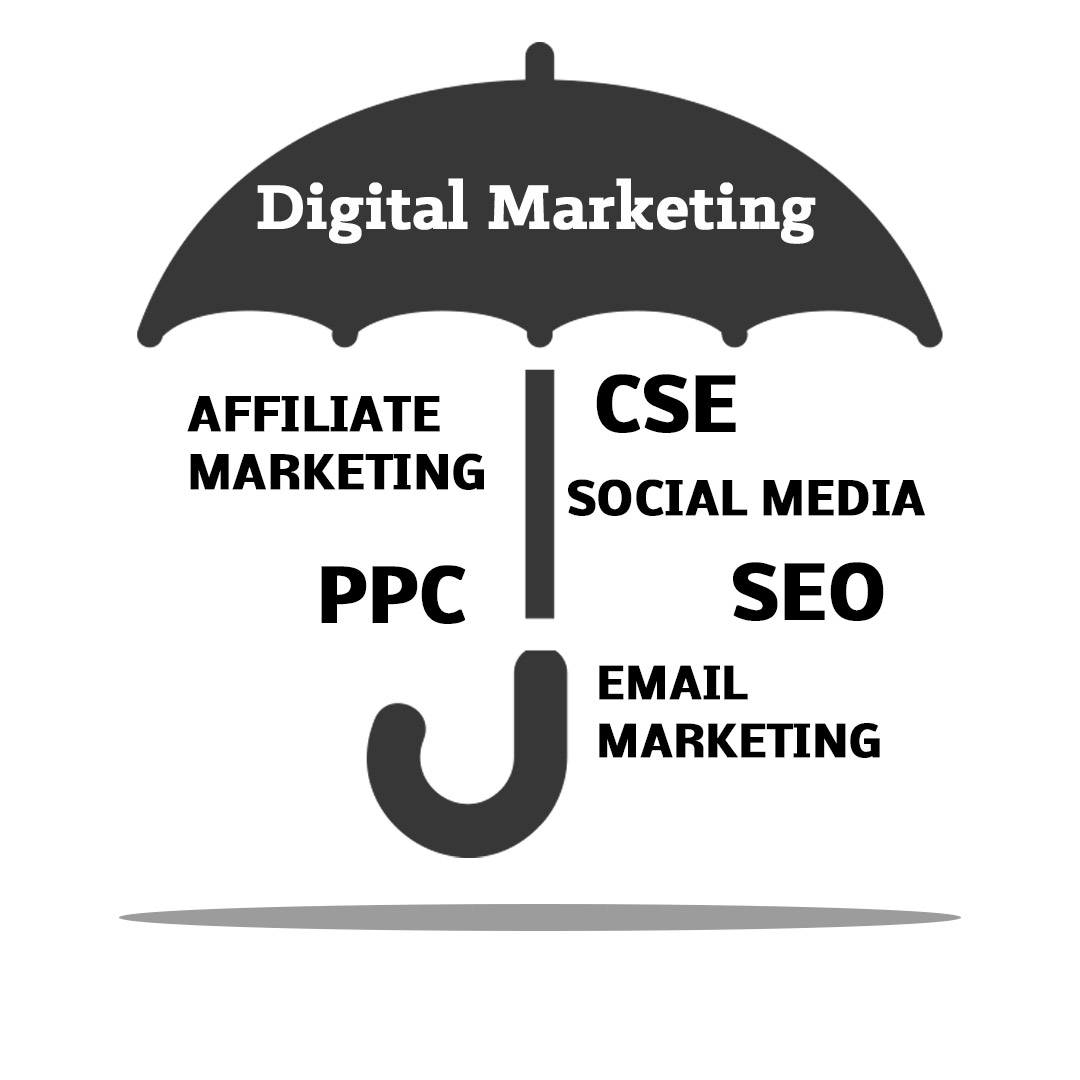
While each is its own discipline, there may be some crossover, and you can’t operate a successful system with just one. All pieces do their respective jobs and complete a puzzle while working in tandem. And in case you aren’t aware of the lingo, don’t be embarrassed! Here’s a quick terminology glossary:
Browser: The means by which you get onto the internet. e.g. Chrome (owned by Google), Safari (owned by Apple), Firefox (owned by Mozilla), Edge (owned by Microsoft)
Search Engine: The program that is driving and showing your search results. e.g. Google, Yahoo, Bing
Keyword: The term a user types* into a search engine to perform a search. *With voice assistant technology such as Google Assistant, Alexa, Siri, etc. a keyword can also be spoken.
Landing Page: The page on which you end up after clicking a search result. e.g. You are on a landing page right now!
URL: The web address for any given page on the internet. e.g. The URL for this page is: https://enx2marketing.com/understanding-digital-marketing-search-results/.
Conversion: When a user takes a desired action. e.g. placing a phone call, enrolling in a newsletter signup, making a purchase, etc.
For our examples today, our browser is Chrome, our search engine is Google, and our keyword is “converse shoes.” Let’s take a walk in those shoes now and match up definitions with visual examples of search results.
Pay-Per-Click (PPC)
PPC search is a form of digital marketing where you bid on keywords with the objective of having your ad triggered by a user’s search, and a goal of that user clicking your ad, landing on your page, and taking the desired action such as a purchase or a phone call. PPC has other strategies such as Display and Video advertising, but Search is the most basic and what we’ll stick with for this article.
You are charged when someone clicks the ad. However, you can’t just buy your way to the top; position is based upon many variables including, but not limited to Quality Score. Targeted users are usually in the mid to late stages of the buying cycle.
Google’s PPC platform is called Google Ads (formerly known as Google AdWords), and Google PPC ads denoted with the word “Ad” in the upper left-hand corner of the listing. The example below in red shows Google PPC search ads:

Comparison Shopping Engines (CSE)
CSE is the cousin of PPC, but is only for eCommerce stores who have tangible products with specified price tags. So, lawyers can’t advertise on a CSE, as they provide services and don’t sell anything you can literally touch.
In contrast, a shoe store can advertise on a CSE, as long as you can purchase the shoes online for a specific price, as opposed to needing a quote for a price for some custom rare collectible pair of shoes, for example. Similar to PPC, you are charged when someone clicks the ad. Examples of CSEs are Google Shopping, PriceGrabber, and Bizrate.
In order to use Google Shopping, you need what is known as a Google Merchant Center account as well as a Google Ads PPC account. However, in order to use Google PPC, you don’t need a CSE Merchant Center account.
Targeted users are most commonly near the end of the buying cycle and therefore at the bottom of the purchase funnel, and therefore, have a good possibility of converting. In our example below, the orange boxes contain CSE results for Google Shopping:
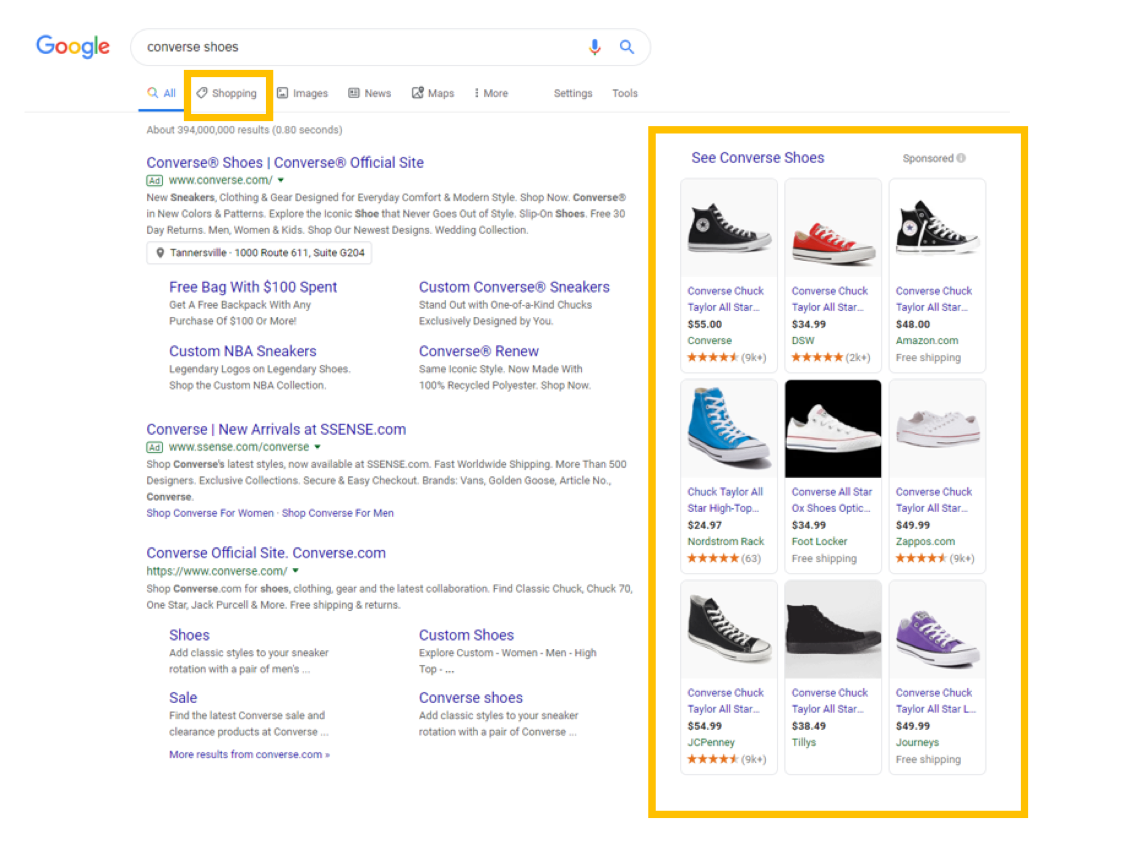
Search Engine Optimization (SEO)
SEO is the form of digital marketing that some call “free,” but that can be misleading. Also known as the “natural” or “organic” listings, there is no paying per click with these results. Google Search Console is a platform central in the world of Google SEO.
However, you don’t just show up in the results automatically or magically. We commonly hear that “content is king” and that is true; however, page content is just one of many spokes in the wheel of SEO. Other components include, but aren’t limited to, blogs, link building, citations, Schema markup, and page speed. In order to obtain and maintain strong rankings in those “free” results, it takes a significant amount of ongoing work by SEO specialists who are very well-versed in each aspect of search engine optimization.
In terms of the sales funnel, SEO can fall into many regions depending upon the particular “spoke” of the wheel in play at any given time. Following in yellow are examples of organic results:
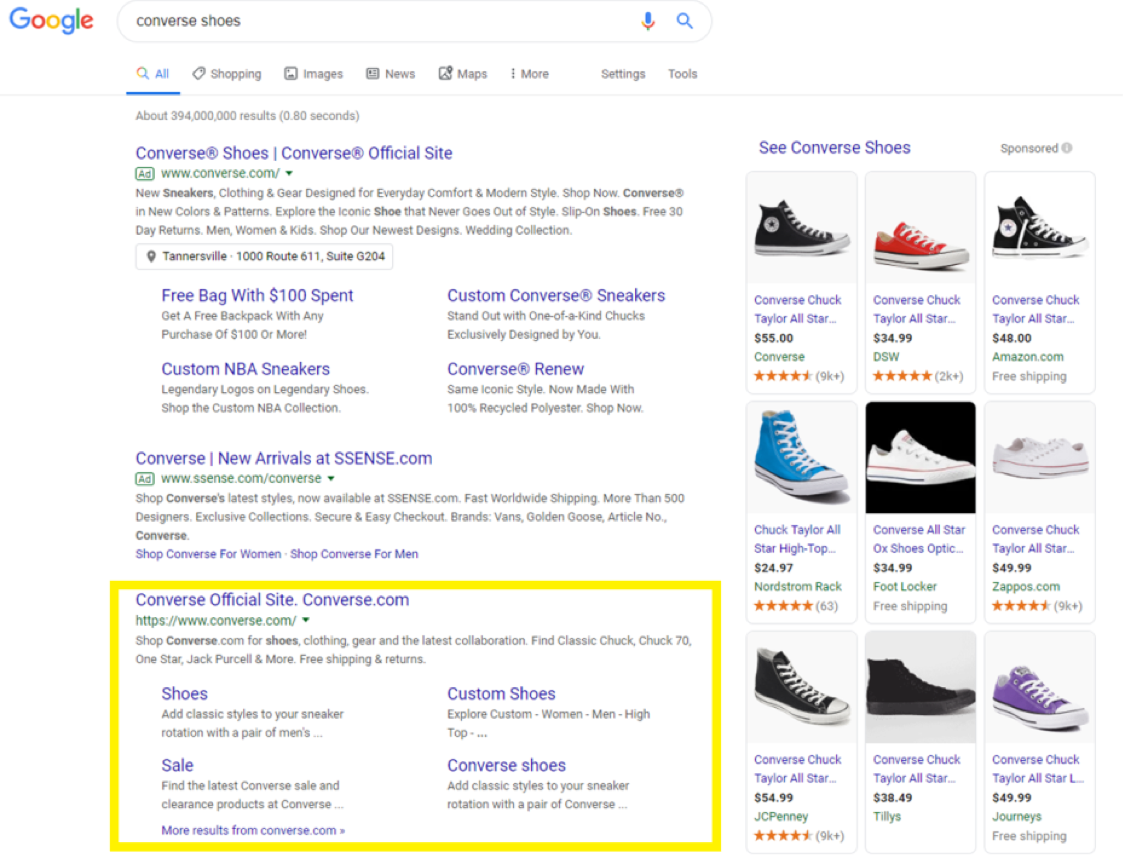
If we move further down the results page, we’ll see listings in yellow related to a map and a profile of the company; these are also driven by SEO efforts, and are related to yet another platform, called Google My Business (GMB). GMB can also impact PPC results, but SEO and PPC results do not directly impact one another.
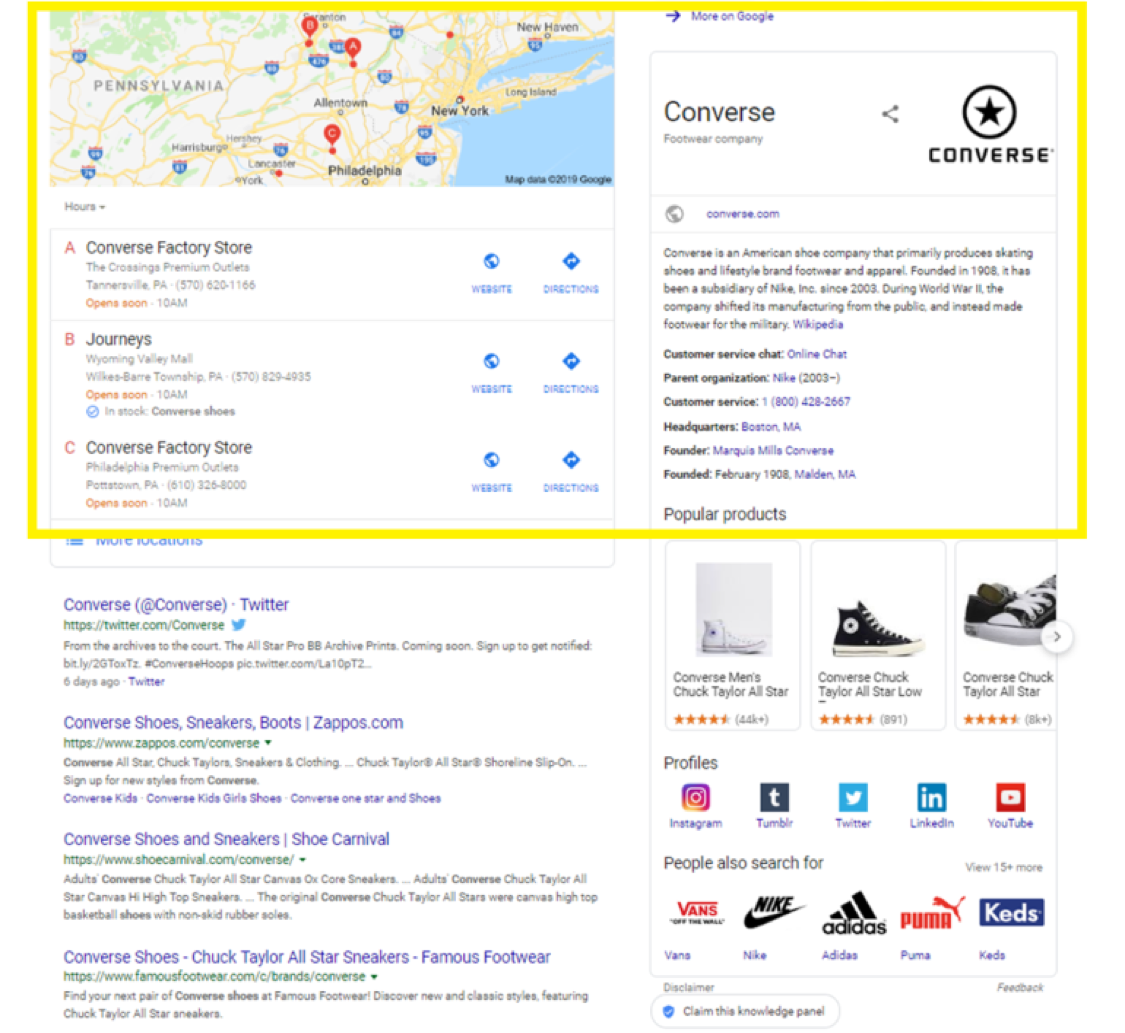
Social Media
Instagram, Facebook, Twitter, and even LinkedIn are all social media platforms. Posts themselves are a form of content that affects SEO, but there are also paid options within social media platforms to achieve more exposure and interaction than with traditional posts alone.
Non-paid posts are usually more geared towards precipitating interaction and creating exposure; as a result, users are often in the early stages of the buying funnel, if in the funnel at all. Paid options usually charge when a user clicks, similar to PPC or CSE; such posts also aim to promote interaction and exposure, but are usually associated with a more aggressive goal, and therefore, attempt to target users who are deeper into the sales funnel and more likely to convert than non-paid social media.
Although social media does not have a direct effect on SEO, it still can drive traffic to your website through a backlink. And don’t forget, tweets do show up in organic listings; in our example below in yellow, you’ll see the Converse Twitter page coming up in the organic rankings. Again, this doesn’t happen automatically, but that’s why we have social media specialists on board who handle all the nuts and bolts in this complicated machine:
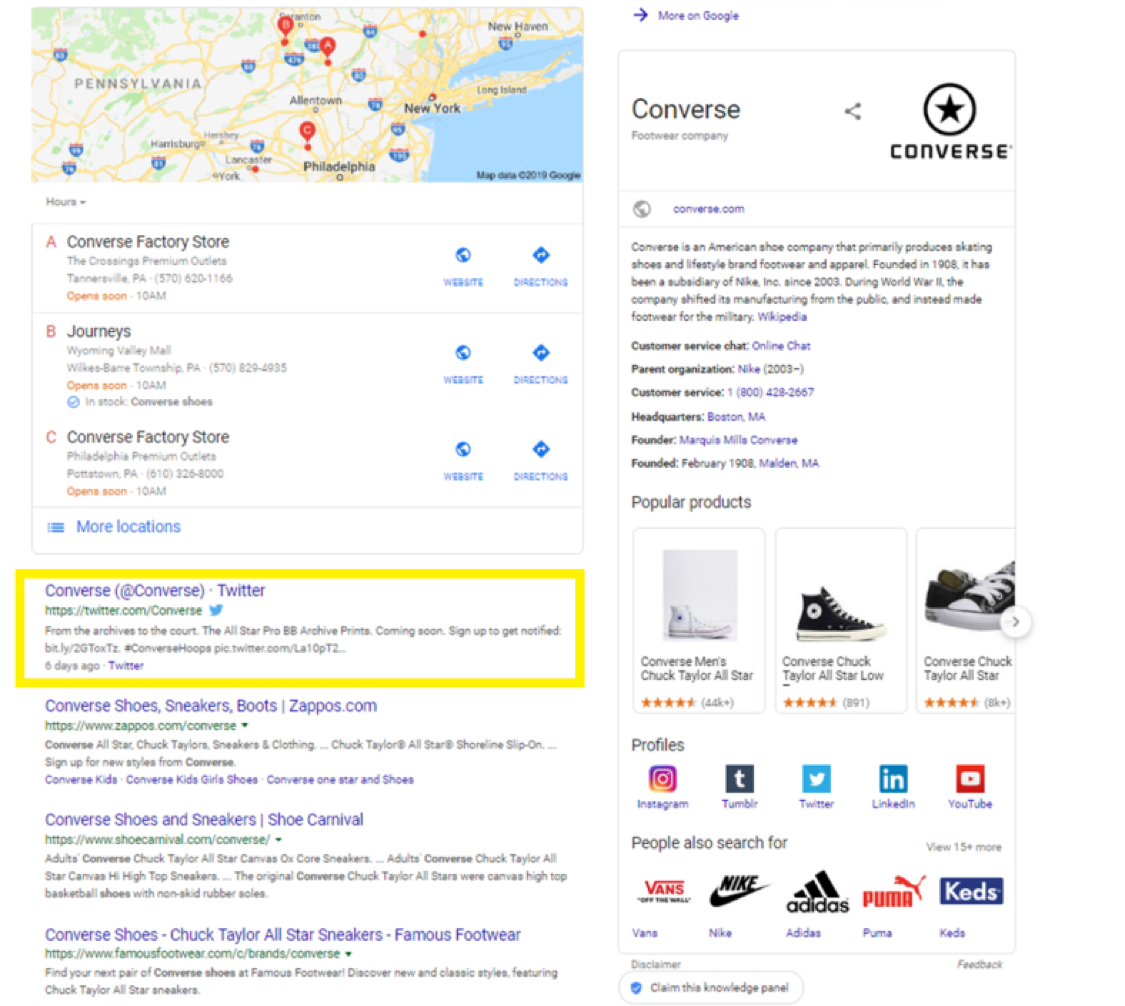
Affiliate Marketing
Affiliate marketing is a robust digital marketing strategy that is most successful for large advertisers who are already well established, are doing all other forms of online marketing, and have lofty budgets. Essentially, through very specific channels, affiliate marketing brings advertisers and publishers together to help make additional sales. When a sale is made, a commission is paid. Affiliate marketing can leverage all different types of digital marketing; so, a PPC ad may actually be from an affiliate that is working on behalf of the merchant.
Email Marketing
Email marketing, although not part of the search results pages, is digital marketing through emailed newsletters or communications. This is one of the highest converting forms of digital marketing, as the user has already interacted with the entity which sent the email, either through a prior purchase or request to receive an e-newsletter. This is a great way to cultivate existing customers and encourage additional purchases. So, if I buy Converse shoes from Macy’s, I may receive an email from Macy’s with a coupon for a future purchase; that’s email marketing.
Digital & Social Articles on Business 2 Community
(81)






